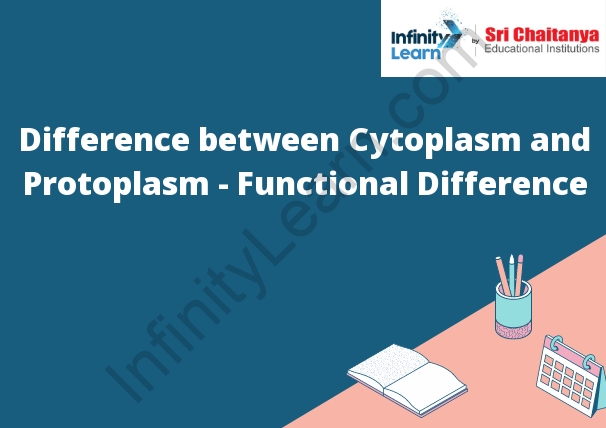Table of Contents
What is Cytoplasm?
Difference between Cytoplasm and Protoplasm – Functional Difference:
Cytoplasm is the semifluid substance that fills the cells of all plants and animals. It is composed of water, proteins, minerals, and organic molecules. The cytoplasm of a cell contains the cell’s DNA and a variety of organelles, including the nucleus, mitochondria, and ribosomes.
What is Protoplasm?
Protoplasm is the living material inside cells. It is a thick, sticky fluid that contains all the organelles of the cell. Protoplasm is made up of water, proteins, carbohydrates, lipids, and minerals.

Cytoplasm
The cytoplasm is the semifluid material that fills the cell cavity of a living cell and surrounds the organelles. It consists of water, ions, proteins, and other organic molecules. The cytoplasm is a complex mixture that performs many vital functions for the cell, including protein synthesis, energy production, and transport.
Parts of Cytoplasm
Cytoplasm is a jelly-like substance that fills the cell. It is made up of cytoplasmic organelles (such as the nucleus and mitochondria) and cytosol. The cytosol is a water-based solution that contains proteins, enzymes, and other molecules needed for the cell to function.
Functions of Cytoplasm
Cytoplasm is the semifluid material that makes up the cell membrane and fills the cell. It is composed of water, proteins, lipids, and other molecules. The cytoplasm performs many vital functions for the cell, including:
- Providing a wet environment for the cell’s organelles.
- Carrying out metabolic reactions.
- Regulating the passage of molecules in and out of the cell.
- Supporting the cell’s shape.
- Acting as a storage area for molecules.
Protoplasm
- Protoplasm is the living material in a cell. It is a thick, gooey substance that contains all of the cell’s organelles.
- Protoplasm is the living material in a cell. It is a thick, gooey substance that contains all of the cell’s organelles. Protoplasm is important because it is responsible for all of the cell’s activities. It contains the genetic material that controls the cell’s functions. Protoplasm is also responsible for the cell’s metabolism and energy production.
Functions of Protoplasm
The protoplasm of a cell is a complex mixture of organic and inorganic substances. It is the substance of the cell and is contained within the cell membrane. The protoplasm contains the cell’s DNA, which carries the genetic information, and the cell’s cytoplasm, which contains the cell’s organelles. The protoplasm is also responsible for the cell’s metabolism and for the cell’s ability to reproduce.
Difference Between Cytoplasm and Protoplasm
- The difference between cytoplasm and protoplasm is that cytoplasm is the material that makes up the cell membrane and the organelles within the cell, while protoplasm is the living material of the cell.
- Cytoplasm and protoplasm are two terms that are often used interchangeably, but they actually have different meanings. Cytoplasm is the jelly-like material that surrounds the nucleus of a cell. Protoplasm is the living material inside a cell that is made up of cytoplasm, the nucleus, and organelles.
What Would Happen to the Cell Without Cytoplasm?
The cell would not survive without cytoplasm. Cytoplasm is a vital part of the cell that contains the cell’s genetic material and organelles.
The cell without cytoplasm would not be able to function and would eventually die. The cytoplasm is a vital part of the cell as it contains all of the organelles that are necessary for the cell to survive. Without the cytoplasm, the cell would not be able to produce energy, replicate its DNA, or produce proteins.







